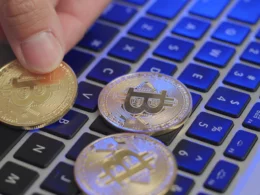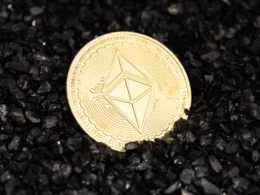And So Crypto Has Crashed…

There’s no denying that crypto crashes are, to an extent, inevitable. No asset class can afford infinite linear growth without a certain amount of contraction to balance things out. This is especially true for an asset class characterised as the ‘fastest-growing asset class of the decade’ and affected by a decreasing yet proverbial high volatility profile.
Anyone who has ever invested in this space for longer than a couple of years will have experienced one. While the severity and recovery time of each crash are varied and highly dependent on said crash’s specific triggers, none of them are a great psychological experience. Because after all, that’s what crashes mostly consist of – sudden influxes of negative sentiment which spread through the market like a pandemic of pessimism.
They bring out to the fore all the negativity repressed during the (often) preceding bull runs, giving voices to frustrated crypto-sceptic media outlets, investors and even governmental institutions eager to deliver a few ‘told-you-so’. Despite the age-old adage of ‘price doesn’t impact fundamentals’ these voices are often a perfect breeding ground for those who want to question the future of blockchain technologies altogether.
Despite this, they have always been followed by an equally groundbreaking recovery and those sturdy enough to withstand their pressure and avoid panic have been duly rewarded. For this reason, it’s worth taking the opportunity provided by the current pessimism to look back on past moments of similar discouragement and find the signs that things are going to get better – and might already be more positive than your crash-induced investing PTSD might suggest.
A Brief History Of Crypto Crashes

The slightly deceiving thing about crypto crashes is that they are not linear. While the amount of money lost (the key metric newspaper headlines have a tendency to highlight for shock-value purposes) has been steadily increasing in line with the enlarged market cap, the proportion of value lost by the asset class has drastically diminished.
Let’s take the first-ever crash, the one of June 2011, which happened way before the time of most well-known crypto institutions of today and only a few months after the now-infamous bitcoin pizza order.
That crash, if repeated today, would probably put the whole US and western economy at serious risk: Bitcoin lost 99.9% of its value in the space of 24 hours!
The currency had spent the first 6 months of the year climbing from 2$ to an admirable $32 (yes, no zeros after that) – with most of its trade happening on the now long gone Mt.Gox exchange. While successful, the website was tarnished by a very poor security protocol which meant that in the space of a week hundreds of user credentials were stolen and used to generate fraudulent trades, crashing the nominal price of bitcoin to its lowest value ever.
The panic was very short-lived – the price recovered swiftly in the hours following this flash crash and Bitcoin (as well as all future alts by extension) survived capitulation.

The second big crash, which happened in December 2013, is the perfect example of another kind of sword constantly hanging over crypto’s growth: governmental regulation.
While the notion of a China crypto ban is now decidedly unsurprising and even the subject of insider memes, the country’s first authoritarian foray into crypto legislation stopped Bitcoin’s first-ever exponential rally (from 200$ to around $1,150 in December 2013) in its tracks and sent the whole sector into a deep crypto winter that lasted almost 3 full years.
Coming onto a part of crypto history most readers might have direct memories of, the next big downturn in the market was also one with lasting consequences. In 2017, the price of Bitcoin started rising early in the year and gained an unprecedented amount of steam – which led the most famous blockchain of all to a 20-fold price increase that neared $20k in mid-December.
While the first signs of uncertain sentiment hit before Christmas, with a 30% drop – that setback was followed by the first true ‘alt season’ later that month and into early January 2018, luring more inexperienced investors into a dangerously volatile space.
The definitive drop that followed was brutal, with BTC retracing all the way to $3.3k, a value which represented an 83% drop since its peak and that many saw as the death toll for the entire blockchain industry at the time.
In this case, the crash wasn’t tied to a specific external factor, but rather a sentiment crisis on the back of unsustainably fast growth in the previous months. With most of the new investors entering the same being retail and inexperienced, the outflow was sudden and panicky, and caused the collapse of dozens of rising alt-coin projects.
This, in turn, raised fears that crypto could never represent a sound investment as it was affected by tulip-mania like adoption rather than organic uptake, and put a serious dent in the asset class’ credibility for a fair while.
The most recent crashes of March 2020 and May 2021 represented interesting examples of two rising factors influencing pricing – while, luckily, the downturn was less severe and more short-lived than in the previous decade of volatility.
The former was a testament to crypto’s increased integration in the traditional equities market dynamics and an early warning of its transition from a ‘store of value’ to a ‘risk asset’ which has materialised this year. Its 37% drop in light of the early 2020 COVID-19 panic was, however, quickly amended by nearly 18 months of huge stimulus checks, liquidity influxes, and institutional involvement at levels never seen before.
In this sense, it almost feels exaggerated to define the near-halving of BTC price that happened in May 2021 as a ‘crash’, given most cryptos reached their all-time highs only a few months later in the fall. But the fact that it was merely triggered by the news of Tesla’s Elon Musk flip-flopping around bitcoin adoption as a payment option for a single automotive brand should have also raised some concerns around the sustainability of the pump experienced simultaneously by all asset classes (housing included) during the post-COVID recovery.
So, Should We Be Worried About 2022?

Will 2022 be part of this scary list in the future?
It certainly is a more complex downturn than some of those outlined below. It’s tied to a myriad of macroeconomic factors, some of which haven’t taken a definite direction yet.
A recession might or might not be on the cards, Russia might or might not entrench itself in a drawn-out stalemate with Ukraine and China might or might not ease the lockdowns that are grinding supply chains worldwide.
It’s likely that the past couple of months of declining price and volume were more of a testament to crypto’s increased dependency on the stock market and perception as a high-risk tech stock than the sign of any deeper loss of belief in blockchain technology’s fundamentals.
For those who were touting BTC as a form of ‘digital gold’, this will be a major setback – but it does signal, even in the midst of all the negativity and fear, that crypto has gained a stable spot among the more classic investment vehicles at an institutional level. And that this new type of investor, which came to prominence during the 2021 run, won’t jump ship as quickly as the retail adopters of 2018.
Indeed, Michael Saylor has reiterated his faith in crypto despite the recent woes, and outflow is solidly reduced when comparing its trend in relation to previous downturns.
How To Warm Up This Crypto Winter

While the above is encouraging and it may very well be that 2023 finds us in significantly better relative terms than 2018 did, there’s no denying that in the short term the markets are set to be a bit colder than they ever were post-pandemic.
Industry media had emphatically announced its coming in a dramatic fashion worthy of Game of Thrones references, and some had even anticipated it. Though the last few days have seen those same individuals and other like-minded crypto analysts revise their harsh weather forecast, even to the extreme.
Given the price spikes of gas and electricity, it might not be the best time to indulge in temperature metaphors – and either way, timing the bottom in such turbulent times is a game riskier than ever.
So, what to do, while we wait to see the wind turn?
- Prepare your strategy for the next bull run. It might seem like a pipe dream now, but it’s coming. Next time, you’ll want to cap your greed and ensure you’ve got a price target for taking (even partial) profits.
- Continue to DCA (dollar-cost-average) into solid projects with strong fundamentals that you think will make it out of the current crisis. If they’re based off a 2011 meme, they might not be the ones we have in mind.
- If your cryptocurrency of choice allows for it, you can earn interest on it through staking. Locking away your investment might also ensure your long-term investment remains so, and prevent you from acting impulsively along market sentiment.
- Continue keeping abreast of industry trends, market news and monitor fundamentals such as overselling and overbuying indicators. If you wait for a CNN article to jump back into active trading, you’re most likely late.
Oh, and most importantly – give this hilarious video a watch every once in a while to remind you that the only thing more irrational than the market these days is… a scared investor.









